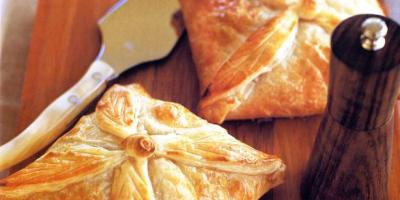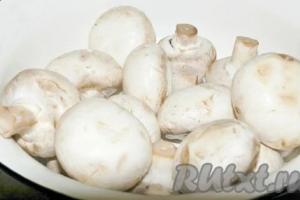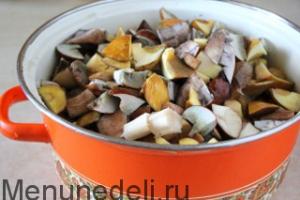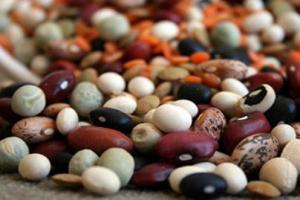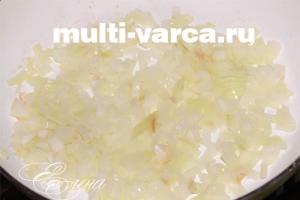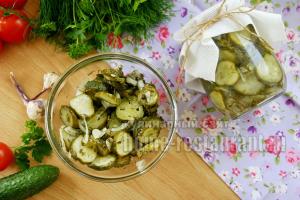Let's figure out which cognac is the best among inexpensive Russian ones and how not to make a mistake in choosing it!
Cognac is a great drink for real men. They can be either just a good gift or a win-win option for a fun feast.
France is considered to be the birthplace of this noble drink. Only there they truly make real cognac. But many people mistakenly believe that there are also Armenian, Ukrainian, Russian and other cognacs, in fact, these are grape brandies.
There is no doubt about the quality of French cognacs, everything is simple here. Their production is strictly controlled by the government. This is how recognized leaders emerged over the years:
- Hennessy
- Remy Martin
- Courvoisier
- Martell
- Bisquit
- Camus
- Augier
- Delamain
But their cost justifies their quality. We are looking for cheaper options. What other criteria are used to choose grape brandy?
This is the main price factor. The French have a little trick: they mix alcohols of different degrees of aging, after which they get a balanced, delicate and sophisticated drink. To determine the aging period, look at the front label of the bottle; these letter designations will help you determine the period.
 Designations:
Designations:
- V.S. – at least 2 years;
- Superior – three years;
- V.S.O.P. – four years;
- V.V.S.O.P. – five years;
- X.O. – six years and older.
On branded drinks:
- CV – minimum six years;
- KVVK - eight years or more;
- KS – at least ten years;
- OS – twelve years or more.
ATTENTION! When the bottle is bottled, at this stage the age of aging is NOT taken into account.
Naturally, the older the cognac, the higher its price. This rule has always been there. Nevertheless you should focus only on your taste. There is a chance that you will like cognac aged 5 years much more than other more “aged” options.
If you are not a gourmet, then you should not overpay. For good cognac, 5 years of aging is enough. But in Russia, in addition to aging, you should pay attention to the appearance.

Remember the important conditions for the appearance of cognac:
- Don't even look at the plastic bottles. Cognac is sold only in glass bottles. This is due to the fact that plastic can enter into a chemical reaction with the properties of cognac, which can result in harmful substances in the future.
- Label. It must be properly glued, without any defects, and the glue should not be visible.
- Under no circumstances can the cork be made of iron; for real cognacs it is made of wood or silicone.
- In cognac NEVER There should be no sediment or impurities; it can only be purely transparent.
- Turning the bottle upside down, larger bubbles should appear first, and then small ones.
- Also, real cognacs always have an oily tint.
- Pay attention to the pleasant aroma, it is harmonious and soft, without a harsh smell.
Prices and description
After learning to distinguish fake from real cognac (grape brandy) then we solve the issue with the price. As mentioned above, there are also inexpensive analogues on sale from Russian, Armenian and other manufacturers. They are quite reasonably priced.

Here is their list:
- White stork (Moldova) – price up to 500 rubles. Floral vanilla aroma. Mild taste. This cognac has also received several awards.
- Cognac Klinkov VSOP (Crimea) – price up to 600 rubles. It is considered the most elite cognac among the cheap options. The taste and aroma will not leave anyone indifferent.
- Jatone X.O. Extra (Ukraine) – price up to 700 rubles. Has the aroma of hazelnut and vanilla, tastes like milk chocolate.
- Tetroni 5 (Georgia) – price up to 700 rubles. Usually they drink it with coffee and chocolate. The taste and aroma are filled with vanilla and fruit.
- Old Kakheti 5 (Georgia) – price up to 1000 rubles. The taste is quite balanced, and the aroma has a delicate and warming aftertaste.
- Lezginka (Russia) – price up to 1100 rubles. The aroma is dominated by hazelnuts and ripe fruits. It has a complex confiture taste. Popular with women, it is usually served with dessert.
- Ararat 5 (Armenia) – price up to 1500 rubles. Combines aromas of plum, peach, dried fruit and dark chocolate. Has a sweetish taste black currant. It is also often added to coffee, so it further reveals its individual properties.
Conclusion
We can conclude that among the cheapest Russian analogues of cognac, Klinkov VSOP Cognac is considered to be, which in terms of price and quality is no worse than other options.
However, it is worth noting that each person has a different taste and everyone prefers something different. The main thing is to focus on quality, because it is this factor that plays a key role when choosing cognac.
“Drink of the gods”, “lion’s milk” - this is how they call cognac. This noble drink is not bought because of the degrees and the effect expected from them. People drink it to first of all enjoy the color, then the smell, then the taste, and only a little later to be wrapped in the warm and cozy trail of cognac. But all of the above applies only to real drinks. good quality. Unfortunately, many distilleries produce products that are not even close to cognac. These varieties of dubious brandies are produced in violation of the original technology. And there are also a lot of fakes that can seriously poison you! And the price per bottle does not at all guarantee that you will buy an authentic product. Which cognac is good and inexpensive, what to choose from the sea of various offers? Read about this in our article.
What is real cognac?
If we are really picky about terminology, this honorary title can only be given to a drink made in the province of Poitou-Charentes, in France. This is what the rules of modern marketing require. The drink, created in neighboring Gascony using a similar technology, is no longer called cognac, but Armagnac. There is also Calvados and other distillates. What distinguishes cognac from brandy is aging. The first one should stand in oak barrels(this is an indispensable condition!) at least nine years. During this time, some of the alcohols evaporate from the tightly sealed container. Winemakers call it “the angels’ share.” In relation to drinks from Poitou-Charentes, there is no point in asking what kind of cognac is good: there can be no complaints about the quality. Another thing is the price. Think for yourself: elite vineyards with unique soils and a favorable climate, oak barrels, the work of French specialists, an original bottle shape... And if you buy good cognac from France in your native country, then add transport costs, customs duties and store margins to the cost of the product. So you won’t be able to buy an original and high-quality drink inexpensively.
French cognacs are their “clones”
In the Poitou-Charentes region, cognac can be removed from barrels and bottled after two years of aging. Essentially, these cognac spirits are brandy. They are marked with the letters VS. This cognac costs from $30 per bottle. Higher quality (and, accordingly, longer exposure) is the VSOP category. The price for a bottle of this drink starts at fifty dollars. A good cognac from France with the letters XO on the label simply cannot cost less than $120. And this is the price in France, without customs clearance and store markup! If they want to sell you a product cheaper, it is counterfeit. Mostly well-known French brands are counterfeited: Hennessy, Camus, Remy Martin, Martell. These brands account for more than half of world cognac sales. And probably just as many counterfeits. Because all the vineyards in France are not able to satisfy the world community's demand for real cognacs.

How to protect yourself from counterfeits
Buying low-quality distillate can lead to more serious health consequences than drinking stale dairy product or a bar with fake chocolate. Poisoning with ethyl alcohols often leads to death, and therefore you need to be on alert. Even if they sell you the products of the Kizlyar plant as good inexpensive cognac, you will still feel sorry for the money you spent. So, how to distinguish an authentic product from a fake? Reputable manufacturers do not skimp on the original shape of the bottle. What makes them do this is not an aesthetic sense, but a desire to insure their products against counterfeiting. The simpler the bottle, the greater the likelihood of fraud. The wooden plug on the original product does not rotate. Read the label. The ingredients must be indicated on it: cognac spirits or their blend. No flavorings! Buy distillates only in supermarkets and trusted specialty stores.

Not everyone can afford to pay 800 rubles for a bottle. Then it’s worth considering the options that other producing countries offer us. Anything grown, aged and bottled outside the province of Poitiers-Charentes is no longer considered cognac. But this is by EU standards. But we still have the old Soviet system in place, according to which a good cognac can be called that if it is made using original French technology. It requires the use of grape must (single-varietal or blend) as a raw material and aging in oak barrels. The main producing countries of inexpensive cognacs are Armenia, Moldova, and Ukraine.

How to correctly read the label on cognacs from the CIS
Prices traditionally depend on the number of stars that indicate the year of aging. But these are all ordinary cognacs. A branded product must be designated as KB. This abbreviation stands for “aged cognac” (6-7 years). Above is the category KVVK. The last two letters mean “high quality”. KS - old cognac - is especially valued. It is made from alcohols that are more than ten years old. It's a good cognac, but you can't call it cheap - a collectible OS (very old). This drink has special advantages. It is sold after being bottled for at least five years. Such cognacs are packaged in beautiful boxes or gift tubes. But, in principle, the quality of the product largely depends on the manufacturer.

Armenian cognac: which one is better to choose?
An introductory note must be made right away: do not compare the Armenian product with the French one. The cool climate of Charente cannot be compared with the continental and mountainous in Armenia. The sun shines here 300 days a year, and the grapes grow as sweet as dates. The French are looking for subtle nuances, gradual development of aromas, and an aftertaste in their cognac. Armenians are a more spontaneous people. They demand richness, temperament, and sparkle from their cognac. There are more than a dozen famous manufacturers in the country. The best Armenian cognac is “Ararat” from the Yerevan plant. Depending on the age (seven or ten years), it costs from thirty to forty dollars per bottle. The products of the Great Valley company are also quite good.

Ukrainian and Moldavian cognacs
The climatic characteristics of Transcarpathia, Crimea, the Northern Black Sea region and Moldova are closer to those of France. But even there, the grapes pick up more sugars than required. But local manufacturers are trying to adhere to technology. And the price on the alcohol market gives this product the green light. A good inexpensive cognac from Ukraine costs from $15. But there are also incomparably cheaper ones (from five dollars per bottle). But ordinary Ukrainian cognacs are of rather low quality. Such manufacturers as “Shabo”, “Galicia”, “Tavriya”, Uzhgorod and Odessa plants have proven themselves well.
What is the best cognac in Moldova? This is a vintage fifteen-year-old “Kvint Tiraspol” - a product of the “KVINT” company. The price for a bottle is about 50 dollars. A cheaper option is the six-year-old Quint Legend. Good cognacs are produced by the Vinaria Bardar, Kalarashi-Divin, Aroma, and Vinimrex factories.

Is it possible to make cognac yourself?
This is a difficult task, but it can be done. Many self-taught winemakers work with moonshine, “ennobling” it with coffee, caramel and other additives. We offer you best recipe cognac at home. Of course, this brandy cannot compete with the French product, but still the drink will turn out quite worthy. We will take muscat grapes as raw materials and try to adhere to classical technology.
We separate the unwashed berries from the bunches and crush them. Transfer this slurry to an enamel bowl. Add sugar. Classic proportions- two kilograms of sand per ten liters of crushed berries. Mix, cover with gauze and place in a warm, dark place for a week. From the second day you need to stir the contents several times a day with a wooden stick. Then we drain the wort and squeeze out the pulp. Add sugar again in the same proportions. Pour into glass bottles, filling them 70%. We close them with a water seal and put them in a cool place. When the young wine is ready (in three weeks), we pass it through moonshine still. Pour out the first 70 ml of the resulting alcohol. Dilute the remaining amount with water (1:1) and run it 2 more times. We infuse the resulting alcohol with a strength of 75 degrees on oak pegs (or in a barrel) for about a year.
- What kind of cognac is considered good in the USSR?- Of the cheap ones, Armenian is better. And dear Georgian is better than French!
(Dialogue between Tulyev and Dymbovich, film "Resident's Mistake"
Cognac production in Georgia arose at the end of the 19th century. In the wake of the general upsurge in 1865, industrialist G. Bolkvadze organized cognac production in Kutaisi. However, the real founder of the cognac business in Georgia is the chemist and public figure D.Z. Sarajishvili. In 1888, he founded the first cognac production in Tbilisi, which began producing cognacs from domestic raw materials for the first time. The same factories were later built in Yerevan, Baku and Bessarabia (Can we feel it? Armenian, Azerbaijani and Moldavian cognacs?). Sarajishvili’s enterprise became a “cognac empire” in the Russian Empire, occupying a monopoly position on the cognac market. In 1913, its products received the official name “Georgian cognac”. Sarajishvili cognacs became worthy rivals to the French cognacs that dominated at that time. Until 1904, Sarajishvili’s cognacs received 6 gold, 4 silver and one bronze medals at international competitions.

Cognac alcohol is obtained by distilling dry wines made from special grape varieties. The resulting alcohol is aged for several years in oak barrels. The quality of cognac is influenced by many factors: the climate and soil on which the grapes used for the production of cognac spirit grow, the quality of the wood used for the barrels, the age and volume of the barrel, the technology for producing cognac and, most importantly, the period of aging of the alcohol in the barrel.
The longer the aging period, the higher the quality of the cognac. The best vintage cognacs are prepared from the oldest aged spirits. Cognacs that are more than five years old are called vintage and are given special names.

So - Aragvi. This is not the best Georgian cognac, but it was one of the most popular, thanks to its price-quality ratio (yes, yes, and the Soviets also knew how to count money and understand quality!) Actually, Aragvi (Georgian: არაგვი) is a river in Eastern Georgia, the left tributary of the Kura. It is formed by the confluence of the White, Black and Pshavskaya Aragvi, flowing from the southern slopes of the Greater Caucasus, near the village of Pasanauri. The length of the river is 66 km, the basin area is 2740 km². Mixed food. The Georgian Military Road runs along the river valley. At the confluence of the Kura River the city of Mtskheta is located.
The Georgians themselves considered Aragvi a sharper cognac in comparison with the Armenian ones, but, nevertheless, it had its own unique taste. This is the Aragvi I have in my collection:



The traditions of Georgian winemaking, laid down by the great masters of the past, guarantee the high quality and prestige of the products of modern cognac production in this country. In the wide range of Georgian cognacs, 3-, 4- and 5-star brands (according to the number of years of aging) occupy a special place. In the French classification, they correspond to cognacs of the V.S. category, and the V.S.O.P. category. correspond to cognacs aged 6, 8 and 10 years. I will now introduce you to one of these cognacs:


Vartsikhe cognac has been produced since 1954. One of the most popular brands of Georgian cognac, with an excellent combination of quality and price. It is based on alcohols older than 7 years. The color is dark amber, with golden reflections. The bouquet is rich, complex, with light tones of vanilla, coffee notes and soft astringency. It is interesting that Vartsikhe is a village on the banks of the Rioni River, in which there is an old fortress, or rather even an old settlement.
I also wanted to touch on Armenian cognacs, but I’ll have to turn to them tomorrow, since it’s impossible to include everything in one article. So - see you tomorrow! :-)
There are thousands of cognac producers in the world, but only a few of them managed to become famous and revered. We will look at the 8 best brands that are role models. These are recognizable brands that have written the name of their creators into history and brought substantial fortunes to their descendants.
1. Hennessy (Hennessy)– the most famous cognac house in the world. Part of the holding of luxury goods manufacturers Louis Vuitton - Moët Hennessy. With a production volume of 50 million bottles per year, it ranks first in the world in cognac sales.
The company was founded by Irish officer Richard Hennessy. After his retirement in 1745, he settled in the city of Cognac, where he began his own production. At first, his cognacs were liked by nobles at the court of Louis XVI, and several decades later the Hennessy brand was known throughout Europe.

 Hennessy
Hennessy 2. Rémy Martin (Remy Martin)- the second largest cognac house in France, founded in 1695 by a young winemaker Remy Martin. The brand is currently owned by Rémy Cointreau Group.
 Remy Martha
Remy Martha 3. Augier (Ogier)– the oldest cognac house in the world, founded in 1643. The products feature stable production technology. In Ogier, craftsmen use only ancient recipes.

 Ogier
Ogier 4. Bisquit– this cognac house was founded in 1819 by twenty-year-old Alexander Biscuit. Products are supplied to the United States, Great Britain, Germany and other countries. In 1965, the brand and vineyard plantations were bought by the Pernod-Ricart company. Since then, Bisquit cognac has harmoniously combined aging traditions and modern production technology.

 Biscuit
Biscuit 5. Camus (Camus)– the brand has existed since 1863, it is still owned by the descendants of the founder Jean Baptiste. This cognac house has 125 hectares of vineyards throughout France. Previously, Camus cognacs were supplied to the royal courts of Europe; now they are considered elite and are sold only in expensive specialized stores.

 Camus
Camus 6. Courvoisier (Courvoisier)- cognac house founded by Emmanuel Courvoisier. It was this brand of cognac that Napoleon Bonaparte drank. After the Emperor's defeat at Waterloo, British officers tasted Napoleon's favorite cognac for the first time. Since then, Emmanuel Courvoisier has also supplied his cognacs to England.

 Courvoisier
Courvoisier This cognac house has its own production technology that does not involve distillation. The alcohol is extracted not from grapes, but from finished wine. In the cellars of the Courvoisier cognac house there are over 3 thousand bottles aged more than 200 years.
7. Davidoff– the company began its history by selling its own cigarettes. In 1964, it was founded by the son of Kyiv emigrants, Zino Davidoff, whose family worked in a tobacco factory all his life.
Very soon, Davidoff cigarettes and cigars became a symbol of sophistication and refined taste. Davidoff cognac appeared as a complement to cigars. It comes in exclusive bottles and is made from Hennessy spirits. This is a drink for very wealthy gentlemen; it can only be purchased in elite stores.

 Davidoff
Davidoff 8. Delamain– in 1824, this cognac house was founded by James Delamain, an English nobleman who owned his own estate in France. First of all, Delamain brand cognacs are known for their light color and unsurpassed fruity taste. These are drinks for true connoisseurs.

 Delamain
Delamain Experts consider the most famous brands of domestic cognac (grape brandy) to be “Moskovsky”, “Kutuzov”, “Shustov”, “Ararat”, “Bagration”, “Noy” and “White Stork”. But they are still far from well-known French manufacturers.
Which cognac to choose, inexpensive but good: tips, brands.
Cognac is recognized as one of the best strong alcoholic drinks. It is made from special varieties grapes, as a result of which strength and taste are achieved through fermentation. All over the world, cognac is recognized as an elite drink, so it is usually served at special events and also presented as a gift.
In the USSR, several technologies for its production were used. Therefore, Georgian, Moldavian, Dagestan, Armenian and other types are distinguished, depending on the region of production, as well as the grape varieties used. In order to choose the right drink, you need to understand how they differ, and also determine why the price for one bottle of cognac can fluctuate in different cost ranges.
Which cognac is better: Armenian or Georgian, Dagestan, Moldavian?
In regions where the grape craft is developed, as well as a warm climate, they have long been engaged in the production of alcoholic beverages. Cognac produced in the USSR was in great demand not only among residents of the great country, but also far beyond its borders. After all, the recipe for preparing the drink differed from classical French traditions, but this did not prevent us from producing a high-quality drink. Now cognac production in these regions continues to delight fans not only with classic types, but also with new ones.
Armenian cognac is distinguished by its sweet aftertaste. For its production, grapes from the Ararat Valley of the following varieties are used:
- Mskhali
- Voskehat
- Rkatsiteli
- Chilar
- Garan Dmak
- Kangun
- Voskehat
Armenian cognac has a chestnut or dark bronze hue, and is also distinguished by a bright and rich aroma of grapes and spices. All types of this drink are divided into different groups depending on the degree of aging:
- Ordinary – from 3 to 5 years
- Vintage – over 6 years old
- Collectible – from 10 years
Armenian cognacs are usually served with:
- Chocolate
- Soft and semi-soft cheeses
- Grapes and fruits
Georgian cognac is produced using double distillation in special metal devices. The following grape varieties are used:
- Gurjaani
- Rkatsiteli
- Chinuri
- Kvareli
- Sachkhere


They are produced in different regions of the country, but the distinctive feature of all drinks is the smell. Since Georgian cognac is aged in oak barrels, it absorbs the aroma of the wood. It is because of this that it is not recommended to be served with desserts. As a rule, Georgian cognac is consumed in small dosages with spicy meat dishes. Cognac has a darker hue, ranging from brown to dark burgundy. This drink is also divided depending on its aging time:
- KV (Aged cognac) – from 6 to 8 years
- KVVK (Aged Highest Quality) – from 8 to 10
- KS (Old) – kept for 10 – 12 years
- OS (Very Old) – from 12 to 23 years
Dagestan cognac is produced in limited quantities, so it is most often counterfeited. The original has a specific smell, because vanilla and sweet spices are used in its production. The drink is infused in wooden barrels using Georgian cognac manufacturing technology. Therefore, the classification of exposure is also no different. The average strength of the drink can vary from 40 to 45 degrees.
Characteristic shades of Dagestan cognacs: copper, honey, light brown. The following types of grapes are used for production:
- Gulabi Dagestan
- Be silly
- Bora bark
- Bayat kapi
It is customary to drink Dagestan cognac with fruits, desserts and chocolate because of its pronounced sweet taste.
Locals call Moldavian cognac “divin”. Its production is similar to the technology of Dagestan and Georgian masters, since they also use wooden barrels and copper vats to prepare and infuse the drink. The classification of Moldovan cognac depends on its aging period:
- DVM – from 6 years
- DVS – more than 8 years
- DVV – over 10 years
- DVFV – at least 20 years


This cognac has a sweetish taste, and the color varies from light brown to amber. Therefore, it is served with desserts, coffee and other sweets. The following grape varieties are used in the production process:
- Shahinya
- Rhizomat
- Frumoase albe
- Negrulya
- Crane anniversary
It is impossible to single out just one manufacturer when searching for an answer to the question: “Which cognac is the best?” Indeed, depending on the aging period, production technology, as well as the grape variety used, the taste, aroma and strength differ significantly. Therefore, each type of drink is suitable depending on the specific event and personal preferences.
Which Russian cognac is better: brands
In Russia, many cognacs are produced under the most famous brands. Some of them have retained the old recipe, but it is worth saying that in recent decades they have also launched the production of many new drinks under previously unknown brands.
Unfortunately, it is increasingly possible to buy a fake. Therefore, in order to avoid a surrogate, it is necessary to give preference to those brands that have a positive reputation and an adequate price. Among the best cognacs produced in Russia are the following brands:
- “Kinovsky” was first released in 2005, but has several produced types of this drink with varying degrees of aging. The greatest merit of this brand is the receipt of an international quality certificate, which confirms the environmental friendliness of the products used. Kinovsky cognac has a sweetish taste, which is why it is a leader in sales
- “Moskovsky” was first released in 1998. This brand of cognac has a fruity and nutty taste, as well as a vanilla aroma.
- "Old Koenigsberg" - has a pronounced sweet taste, as well as the rich aroma of herbs, spices and dried fruits. Is classic version cognac in our country, so consumers prefer to choose it as a gift


- “Arbatsky” - cognac has been aged for 3 to 5 years. It is characterized by a woody aroma, which is obtained through production in oak barrels. The aroma has pronounced notes of prunes, vanilla and oak.
- “Derbentsky” has been produced at the plant of the same name since the 1960s. Recently, the recipe has been improved due to the emergence of new production technologies, as well as the use of more spices and spices, which can better highlight the entire flavor range of the drink.
What is the best inexpensive cognac: rating and top inexpensive cognacs
Among cognacs there are many differences both in taste and aging criteria, and in cost. Among domestic drinks you can find not only those that cost several thousand, but also cheaper options. But in order not to buy a surrogate, you need to figure out which cognacs are really low in cost and which are fake. Among the best domestic drinks at an affordable price are:
- “Ararat” has long become a classic. A 250 ml bottle costs about 400 rubles. The drink has pronounced notes of black currants, peaches and plums. Therefore, it is served with desserts and fruits at almost every feast.
- “White Stork” is one of the best Moldovan cognacs. Its popularity lies in its price (about 500 rubles per 0.5 l), as well as its taste. After all, in production they use a combination of white grape varieties, as well as a composition of spices that lighten the taste, despite aging for 5 years.
- “Klinkov V.S.O.P” is considered elite, despite its affordable price (about 1000 rubles per 500 ml). However, this price is completely justified, because the best grape varieties are used to make this cognac. The drink is usually served with durum varieties cheese, as well as meat snacks.


- “Old Kakheti” is one of the most popular Georgian cognacs. Its cost is about 800 rubles, and its rich taste is made by adding dried fruits and white grapes.
- "Arcadia" is a classic Ukrainian cognac produced in the city of Odessa. In the manufacturing process, about 10 types of alcohol are used, as well as several varieties of grapes. The price for one bottle with a capacity of 250 ml is about 1000 rubles. This alcohol is usually served with desserts, fruits and chocolate.
- “Lezginka” has an affordable price (600 rubles per 0.5 liter bottle). Cognac has a characteristic chocolate smell. At the same time, the manufacturer applies several levels of protection so that the buyer can distinguish the surrogate from the original product.
Which of the Armenian, Georgian, Moldavian, Dagestan cognacs is better to choose and buy?
Dagestan, Georgian, Moldavian and Armenian cognacs were considered a scarce commodity back in Soviet times. Today they are not inferior in popularity compared to foreign brands. Unfortunately, many of the imported drinks are not available to the majority of the population of our country due to their high cost.
However, traditional cognacs produced in former Soviet countries are of high quality even now, despite their moderate cost. Among the best Moldovan ones are:
- “Doina” – the process lasts 9 years, and a huge number of awards confirm the high quality of the product
- "Bouquet of Moldova"
- "White Stork"
- "KVINT"
In order to distinguish original cognac from a fake, you need to pay attention to the country of origin indicated in the barcode, as well as the labels and quality of the bottle.
Among the Armenian cognacs the best are recognized:
- "Ararat"
- "Dvin"
- "Festive"
- "Aik"
- "Nairi"
The most popular and high-quality cognacs produced in Georgia:
- "Legend of Tbilisi"
- "Anniversary"
- "Eniseli"
- "Sarajishvili"
- "Askaneli"
- "Tiflis"
- "Old Kakheti"
- "Batumi"


Dagestan cognacs are most often counterfeited. However, in order to determine the authenticity of the drink, it is important to pay attention to the quality of the container and label. As a rule, scammers do not bother with their design and accuracy of application. Among the best cognacs are:
- "Sherry"
- "Madeira"
- "My Dagestan"
- "Kizlyar"
- "Lezginka"
- "Derbent"
- "Yuzhdag"
- "Caspian"
- "Pearl of Dagestan"
- "Bouquet of Dagestan"
Which inexpensive cognac is the most delicious, cheapest, softest, and of the highest quality?
Among cognacs with a mild taste, there are several dozen options, differing in the degree of aging and a pleasant fruity shade. However, not all of them have an acceptable price. Among budget options, which are of high quality, but at the same time accessible to all segments of the population, are the following cognacs:
- Koktebel “Three Stars” is produced on the Crimean peninsula. For 250 ml the price is about 200 rubles. The drink has 40% strength and is aged for 3 years. Characterized by the presence of floral and fruity notes, honey color and sweet aftertaste.
- “Noy Araspel” – made in Armenia. Aged for 3 years, the strength is 40%. For 350 ml the price is 460 rubles. Cognac has an amber color and a fruity chocolate aroma.


- “Zhvanetsky” – aged for 5 years. Made in Russia (Moscow region), strength about 40%. It has an amber color and a white cherry flavor. But it’s difficult to call the drink light, since the too strong taste is more suitable as an addition to a meal, rather than a dessert.
- "Yuzhdag" - production is located in Dagestan. Price for 250 ml is about 230 rubles. Has a dark honey taste. The smell and taste contain notes of vanilla, oak, fruit and flowers.
- “Cognac “Praskoveysky” is produced in the Stavropol Territory. 250 ml will cost you 280 rubles. The drink is aged for 3 years. The taste and smell are very similar to Koktebel “Three Stars”.
- “Aur De Balanesti” is called one of the best cognacs produced in Moldova. Aging is 3 years and the strength is 40%. The price for a 200 ml bottle is about 290 rubles. The drink has a buttery taste and an aftertaste of vanilla and dried fruits. Goes great with desserts and coffee.
When choosing a drink as an addition to a sweet table or to serve with light snacks It’s worth opting for either cognacs with an aging period of 3 years, or giving preference to elite collectibles. Because drinks with an infusion period of more than 15 years have less pronounced alcohol and stronger shades of wood and fruit. But if the budget is limited, it is important to take into account all the tones of flavors and choose cognac made from sweet white grape varieties.
Recommend an inexpensive but good cognac within 1000, 1500, 3000 rubles: tips
Presenting cognac has become a tradition in our country since the times of the USSR. After all, during that period, alcoholic drinks They were scarce goods, so they were given only for special occasions. Now this tradition is firmly rooted, despite the fact that store shelves are bursting with an abundance of both domestic and foreign cognacs.
Among the best cognacs that can be purchased in the range from 1000 to 3000 rubles are:
- “Lezginka” – produced by the Kizlyar Brandy Factory. The aging period is 6 years, and the strength is 40%. The price for 0.5 liters is about 2000 rubles. The drink has a dark amber hue and a hazelnut aroma. There are also notes of vanilla, so it can be consumed as an aperitif.
- "Ekaterinodar" - made in Russia. It has 20 years of aging and 40% strength. The price for 0.7 liters is 3030 rubles. We have a dark brown hue, as well as flavors of wood, oranges, vanilla, plums and other fruits.
- “Tsar Tigran” is one of the best Armenian cognacs. Aging is 10 years, and the price for 0.7 l is 2345 rubles. The drink has an amber color and an oily taste. forest berries, vanilla and nuts.


- “Ararat Nairi” also belongs to the series of Armenian cognacs. Aging is about 20 years, and the strength is 40%. For a 0.5 liter bottle the price is 3120 rubles. The taste has hints of cloves, honey, cinnamon and toasted rye bread. The aroma is very similar to cedar.
- “Graneli” is a Georgian cognac aged for five years. The strength is 40%, and the price for 0.5 liters is 1,780 rubles. The almond aftertaste made this drink very popular not only in Georgia, but also far beyond its borders.
- “Aur De Balanesti” – produced in Moldova using chocolate, flowers and vanilla. The aging period is 7 years. And the price for 500 ml is 800 rubles. The drink has a sweet taste and amber color.
Before choosing cognac, it is important to pay attention not only to the composition, but also to the quality of the packaging. If you can see the bottle's gluing, excess glue and label disproportion, you are most likely looking at a fake. Regarding snacks for such a drink, you should avoid lemon, giving preference to fruits, cheeses, desserts, meat and chocolate.
Video: How is the best Russian cognac made?

